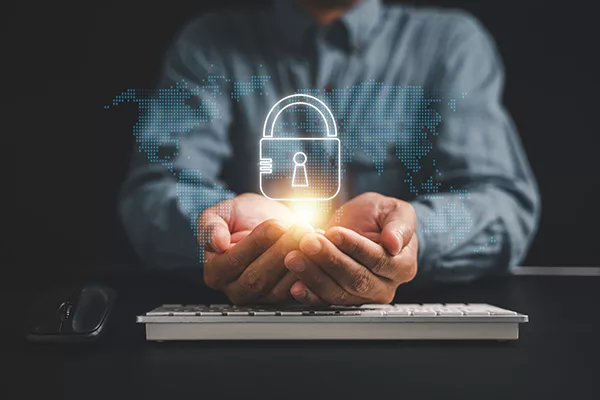
Quantum Computing Vulnerabilities
Quantum computing’s promise of unparalleled processing power is undeniable. However, its potential to break encryption algorithms poses a significant threat to cybersecurity in all industries. As quantum computing continues to mature, the risk of current encryption methods becoming obsolete grows, potentially compromising sensitive data across all industries.
Advanced Phishing Attacks
Advanced phishing attacks represent a sophisticated evolution in cyber deception. Employing intricate tactics to dupe even the most vigilant users. Leveraging personalized and contextually relevant content, these attacks mimic trusted sources, such as familiar contacts or reputable organizations, to manipulate individuals into divulging sensitive information or performing unintended actions. Coupled with social engineering techniques and AI-generated content, these phishing attempts can bypass traditional security measures, exploiting psychological vulnerabilities and leveraging real-time data to craft compelling and convincing messages, thereby posing an elevated risk to individuals and organizations alike.
Another form of Phishing is called vishing attacks. They use voice assistance software or voice calls to convince the end user to take a certain action. Research is performed ahead of time on the user to use personal information in order to extract money or any form of currency.
Ongoing cyber security training is essential for employees to be aware of these threats and to sniff them out before an employee puts your business at risk. Ask about True IT’s cyber security training today.
Ransomware Evolving
Ransomware, a menacing form of cyber extortion, has evolved into a more sophisticated and pervasive threat in recent times. The evolution of ransomware involves not just encrypting data but also employing multifaceted strategies. It now incorporates advanced encryption techniques, stealthier delivery mechanisms, and the targeting of specific industries or high-value entities. Moreover, the emergence of “double extortion” tactics, where threat actors not only encrypt data but also exfiltrate sensitive information, intensifies the leverage against victims. These attacks are orchestrated with meticulous planning, often exploiting unpatched vulnerabilities and leveraging human error through social engineering.
Additionally, the use of cryptocurrencies makes tracking payments and identifying perpetrators more challenging. The evolving nature of ransomware demands a comprehensive approach to cybersecurity, emphasizing robust defense mechanisms, proactive threat hunting, user education, and resilient backup strategies to mitigate its disruptive impact.
5G Network Vulnerabilities
The advent of 5G networks has ushered in a new era of connectivity, promising unprecedented speed and reliability. However, with this technological leap forward comes a suite of vulnerabilities that demand scrutiny. The intricate network architecture of 5G, reliant on a complex web of interconnected devices and virtualized infrastructure, presents expanded attack surfaces for cyber threats.
Vulnerabilities in software-defined networking, virtualized network functions, and the massive increase in connected devices heighten the risk of potential breaches and cyberattacks. Additionally, the deployment of 5G relies heavily on software and firmware updates, introducing potential points of exploitation if not rigorously managed. The rush to expand and integrate 5G into various industries amplifies the urgency to address these vulnerabilities, emphasizing the need for robust security protocols, regular risk assessments, and collaboration across stakeholders to fortify against potential cyber threats in this new network landscape.
Data Poisoning Attacks
Data poisoning attacks, a stealthy manipulation technique in the realm of machine learning and AI, involve subtly altering training data to compromise the performance and integrity of AI models. By injecting malicious or misleading information into the training datasets, attackers aim to distort the learning process, leading to skewed predictions or incorrect decisions by the AI system. These attacks can be strategically orchestrated by injecting slight alterations or biases into vast datasets, causing AI algorithms to make erroneous conclusions or act in unintended ways.
As AI and machine learning models increasingly permeate critical sectors like finance, healthcare, and autonomous systems, safeguarding against data poisoning attacks becomes pivotal. Robust data validation, ongoing monitoring, and implementing stringent data hygiene practices are crucial steps in mitigating the risks posed by these sophisticated attacks, preserving the reliability and trustworthiness of AI-driven decision-making.
Tips For Defending Against These Technology Threats
- Conduct regular employee security training
- Implement robust email filtering software and security
- Use very strong passwords and multi-factor authentication for all online accounts
- Maintain up-to-date software and security patches
- Implement regular data backups stored in secure and isolated environments
- Utilize robust antivirus and anti-malware solutions
Contact True IT today to begin a security assessment of your network and business.



Comments